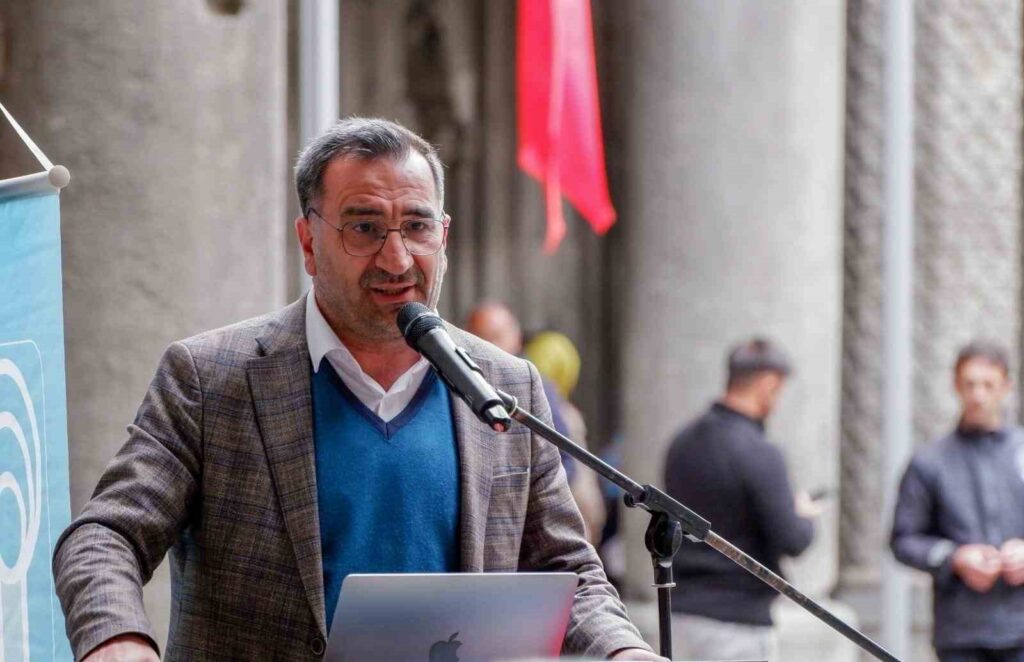It was one of the prominent factories of the Ottoman Empire, and now it is in a deplorable state.
Established in Kocaeli in 1832 to increase the durability of fezzes, Dinkhane was once one of the Ottoman Empire’s prominent industrial centers, but today it draws attention with its ruined state and frightening appearance. Located in Başiskele, Dinkhane in 1832…

Established in 1832 in Kocaeli to increase the durability of the fez, Dinkhane was once one of the Ottoman Empire’s prominent industrial centers, but today it draws attention with its dilapidated condition and eerie appearance.
Located in Başiskele, Dinkhane was founded in 1832 to enhance the durability of fezzes produced at the Feshane in Istanbul. Under the orders of Ottoman Sultan Mahmud II, the fezzes brought from Istanbul by ship were treated with hot water and soap in this factory. Processing an average of 500 fezzes daily, Dinkhane gradually took over the felting processes of fabrics coming from the Izmit Çuha Factory. Thus, Dinkhane became an important center during the Ottoman industrialization process.
Awaiting its day to be revitalized for tourism
The interior of the structure that hosted the felting process for fezzes for many years has now become almost a ruin. The materials used in the fez felting process have been broken and rendered unusable, while the buildings have decayed over time, and the surrounding area has been overgrown with weeds. Once a bustling industrial center, Dinkhane now stands as a silent ruin.
Researcher-writer Emin Öztürk provided information about the history of the structure. He noted that during Sultan Mahmud II’s reign, the use of fezzes became widespread, leading to imports from Tunisia, France, and Austria. Öztürk said, “When the annual import quantity exceeded half a million, the state took action to produce the fezzes needed by the army domestically. In 1831, Sultan Mahmud II appointed Chief Architect Altunizade İsmail Zühtü Pasha for this task. Altunizade brought 23 fez masters from Tunisia and 15 skilled apprentices from Bursa to establish the Feshane in Istanbul and began fez production.”
Öztürk stated that one of the most important stages in fez production was the felting process aimed at increasing the durability of the woolen fabric, explaining, “The fabric was beaten with hot water and soap to compact it. This process was previously done by trampling it by foot, but later it began to be carried out in water mills.”
“Established after analyzing the waters”
Emin Öztürk explained that Dinkhane was established at the request of the masters working at the Feshane, continuing, “The Tunisian masters, unable to achieve the desired color for the fezzes produced at Feshane, concluded that the water in Istanbul was not suitable for this work. Consequently, the masters were sent to Izmit, where all the waters were examined. As a result of the investigations, it was determined that the water of Kirazdere, which supplies water to the Yuvacık Dam, was very suitable for this work. Later, a wooden bridge was erected next to Kirazdere, and the felting process began. However, frequent floods rendered this bridge unusable, and thus, in the spring of 1832, it was decided to establish a permanent Dinkhane here.”
Öztürk pointed out that the materials used in the construction of Dinkhane were carefully selected, stating, “The necessary timbers for the structure were obtained from the Samanlı Mountains, and the stones were sourced from an old palace near Izmit.”
“An important part of the Ottoman’s industrialization effort”
Öztürk provided information that Dinkhane was built as a two-story structure, with clerk rooms and a coffee house on the upper floor, and stables, warehouses, and a cellar on the lower floor. He also noted that there were four large wheels in the structure, each with two hammers attached. Öztürk added, “Additionally, there were large copper cauldrons, pools, and drying areas in the structure. After the completion of the Dinkhane construction, the fezzes produced at the Feshane were loaded onto ships to be sent to Izmit for felting and were then brought to Dinkhane with the help of porters from the dock. During that period, 500 fezzes were felted daily at Dinkhane. After the establishment of the Izmit Çuha Factory in 1843, fabrics were also felted here. For this reason, new sections were added to Dinkhane. Thus, this structure, whose foundations were laid during the reign of Sultan Mahmud II, became an important part of the Ottoman’s industrialization effort.”







